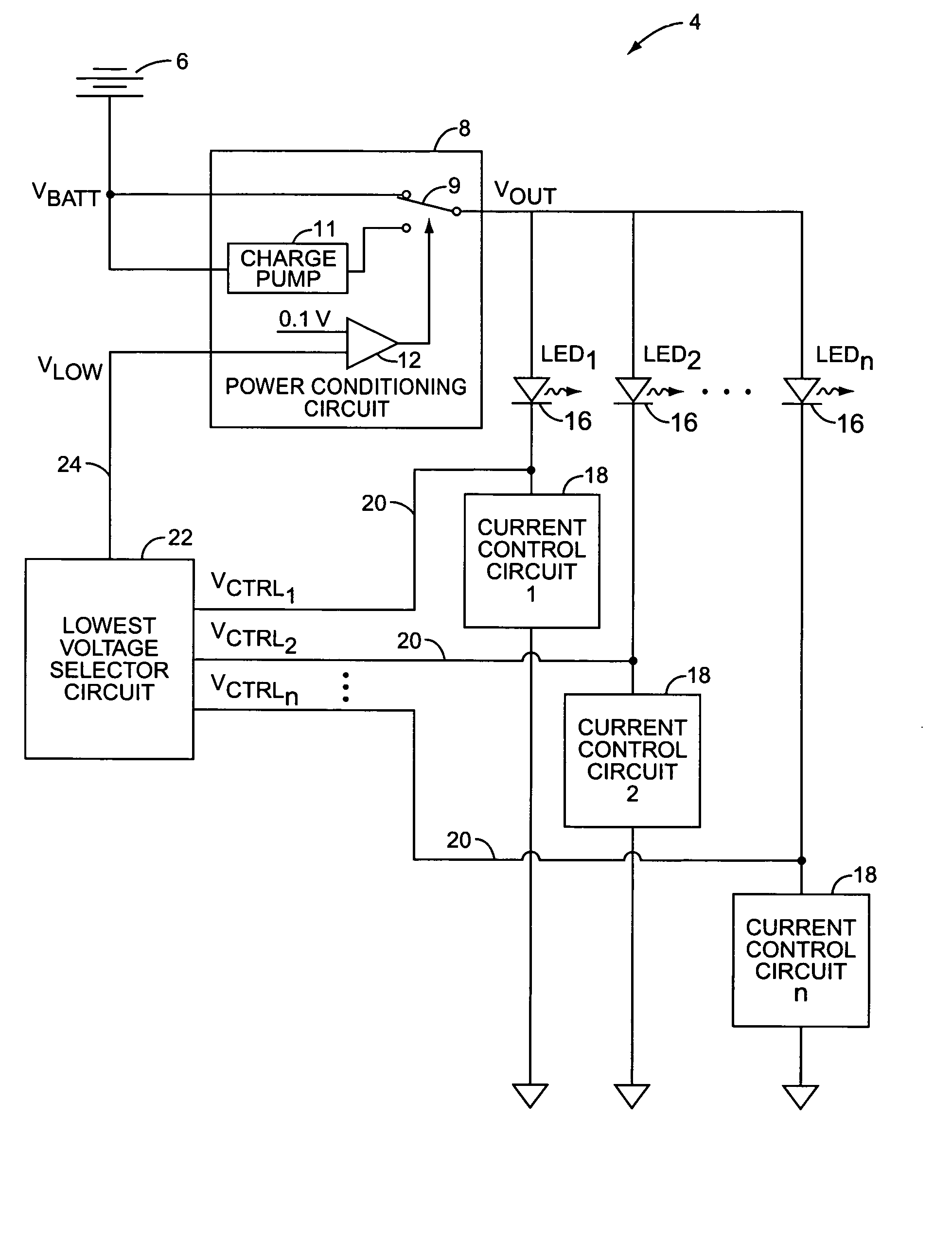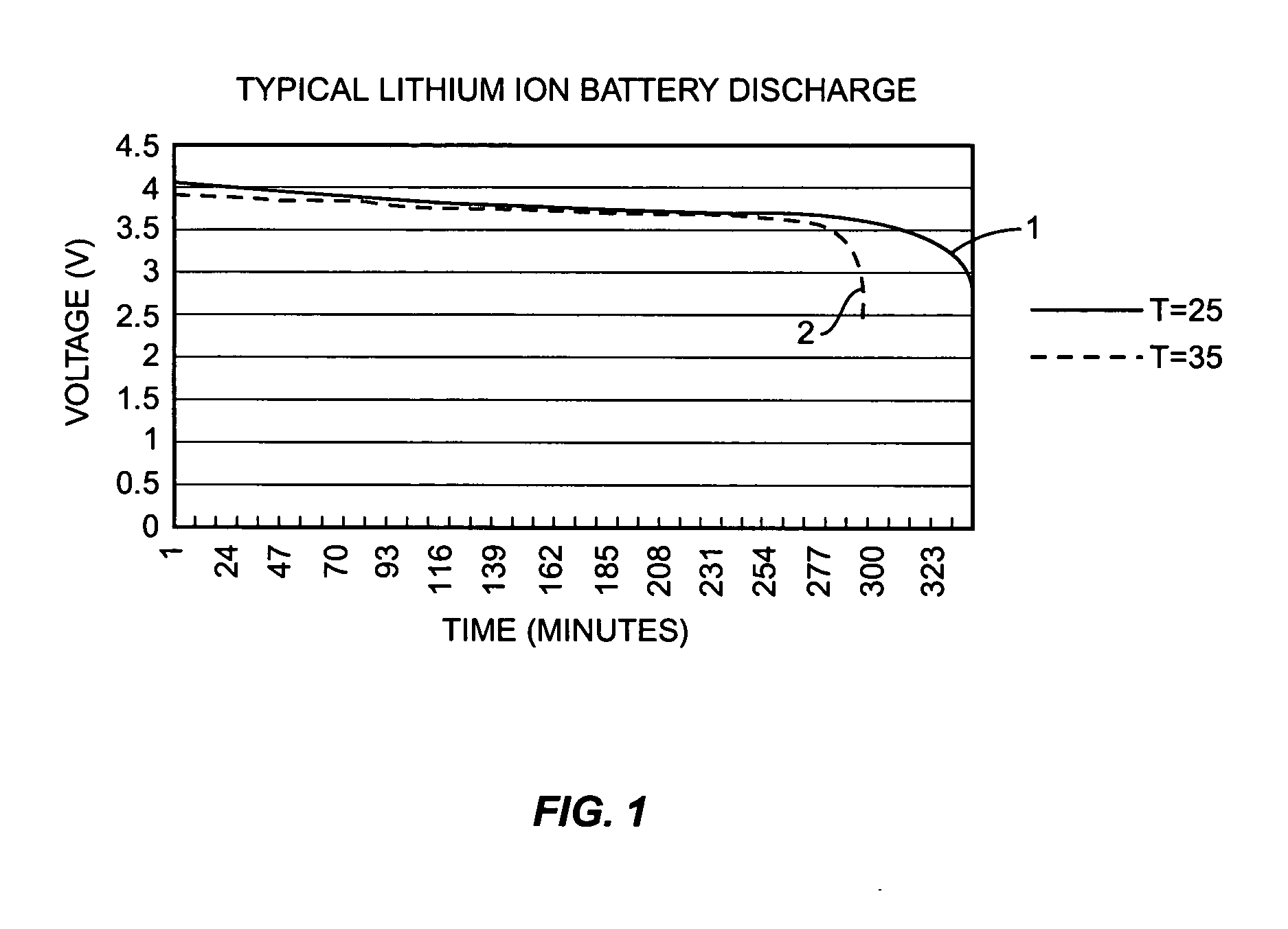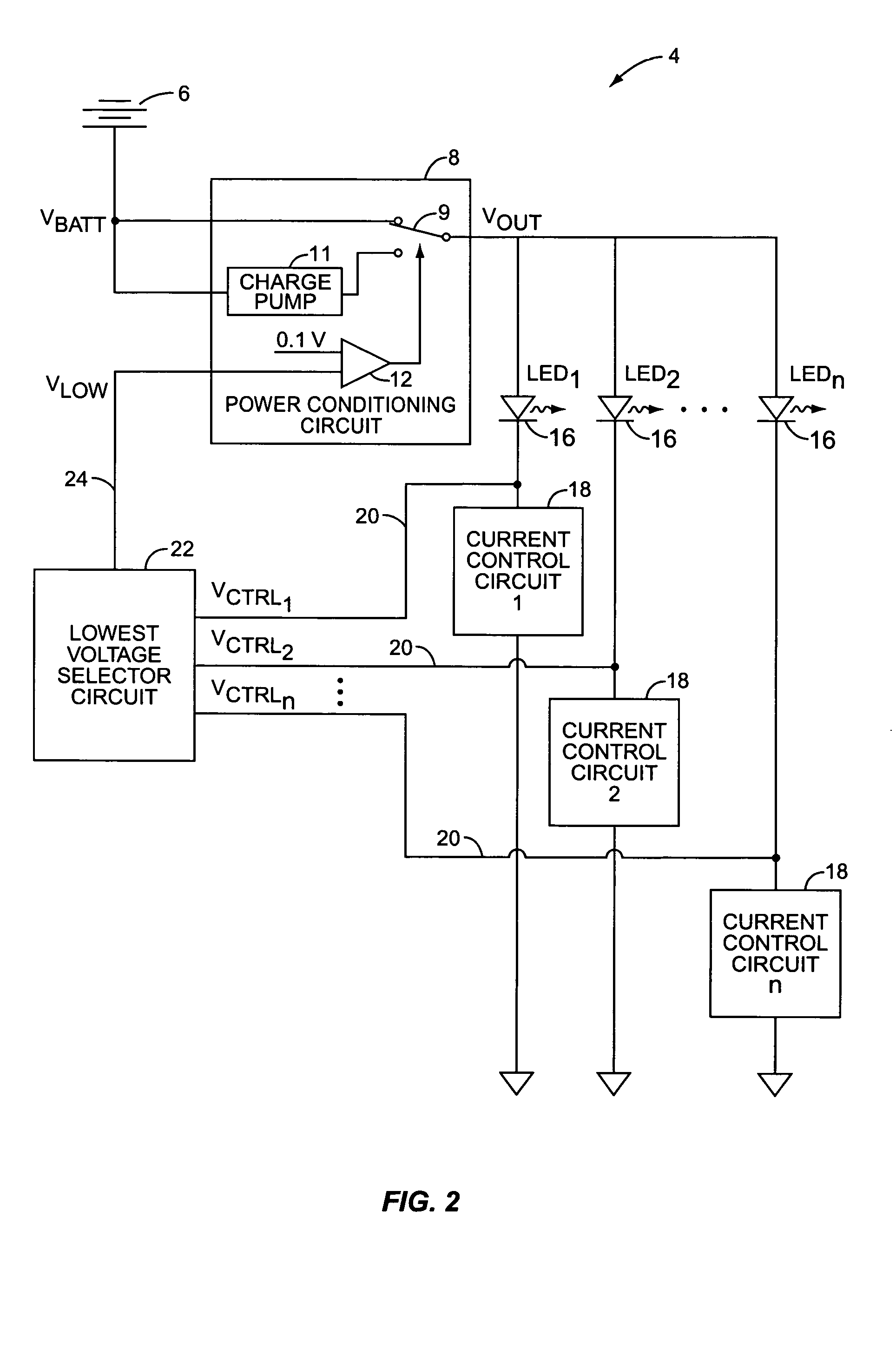Method and apparatus for driving LED's
a technology of leds and circuits, applied in pulse generators, pulse techniques, instruments, etc., can solve the problems of low power consumption and extending battery life, inefficiency of boost converters, and potentially wasteing limited battery power, and varying the forward voltage of white leds
- Summary
- Abstract
- Description
- Claims
- Application Information
AI Technical Summary
Benefits of technology
Problems solved by technology
Method used
Image
Examples
Embodiment Construction
[0019]FIG. 2 depicts, in functional block diagram form, a power supply and current control circuit, indicated generally by the numeral 10, for driving a plurality of LEDs 16 from a battery 6, which is preferably a lithium ion battery having a discharge profile similar to that depicted in FIG. 1. The battery 6 provides an output voltage VBATT to a power conditioning circuit 8, which in turn provides an output voltage VOUT. VOUT powers a plurality of LEDs 16, connected in parallel. Connected in series with each LED 16 is a current control circuit 18 that controls the current through the corresponding LED 16 to a predetermined level. The voltage drop across each current control circuit 18, measured at tap 20, is supplied to a lowest voltage selector circuit 22. The selector circuit 22 isolates and forwards the lowest of the tapped voltages, VLOW 24, to the power conditioning circuit 8.
[0020] Power conditioning circuit 8 operates in two modes. In a first, or battery mode, VOUT is taken...
PUM
 Login to View More
Login to View More Abstract
Description
Claims
Application Information
 Login to View More
Login to View More - R&D
- Intellectual Property
- Life Sciences
- Materials
- Tech Scout
- Unparalleled Data Quality
- Higher Quality Content
- 60% Fewer Hallucinations
Browse by: Latest US Patents, China's latest patents, Technical Efficacy Thesaurus, Application Domain, Technology Topic, Popular Technical Reports.
© 2025 PatSnap. All rights reserved.Legal|Privacy policy|Modern Slavery Act Transparency Statement|Sitemap|About US| Contact US: help@patsnap.com



